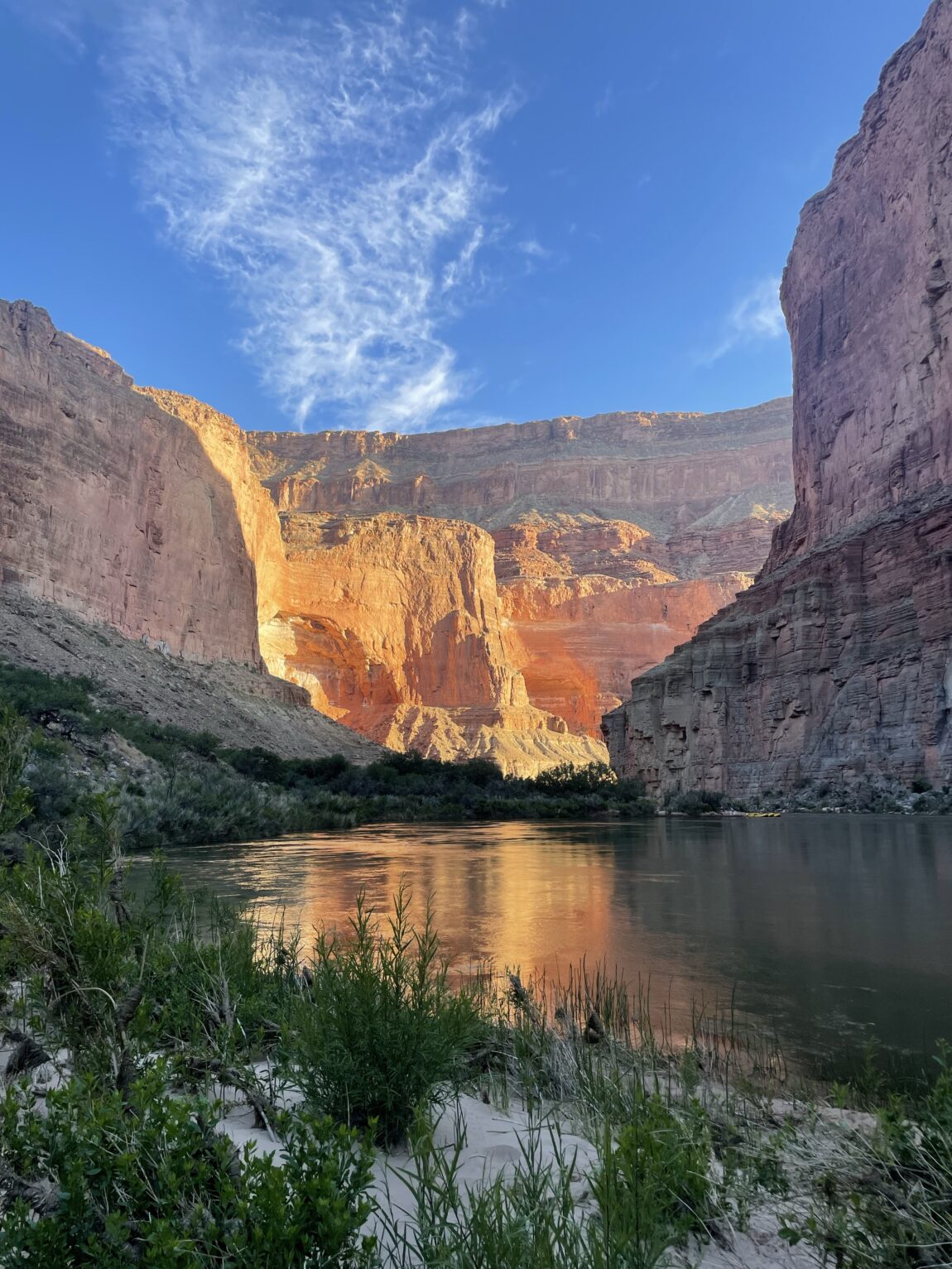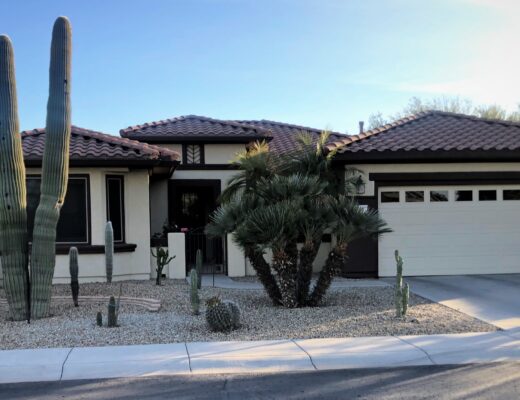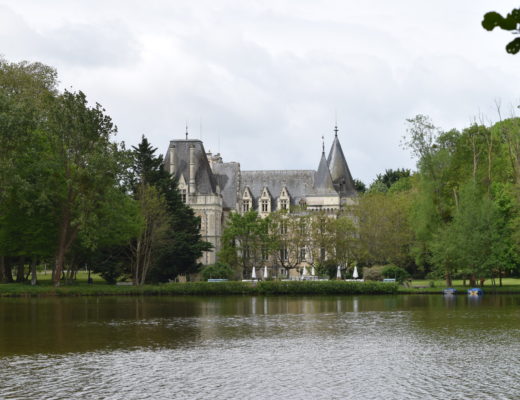I first visited the Grand Canyon in 1996 and fell in love with its spectacular beauty. In 2015 Kelly and I joined my sisters and hiked the Canyon from rim to rim, something I would recommend to anyone who likes to hike. Over the years our family has enjoyed the occasional white water rafting day trip. Well….. most of our family. The kids and I love it, Kelly not so much. I think it stems from her years as a trauma nurse, she views most activities from the knowing perspective of having seen the worst-case outcome. While we are enjoying a wet and bouncy roller coaster ride, she is thinking about drowning, broken bones and head trauma. So, when I started thinking about rafting the Grand Canyon with my two children, Kelly’s response was “have a good time, and please don’t die”. This is not an easy or cheap dream as the Canyon is over 200 miles long and has around 80 rapids, several rated Class V, or class 10 on the GC rating system. It is not a day trip and not something you do on your own unless you have some significant experience running rapids, which I do not.
In 2021 I started thinking about booking a raft trip down the Canyon for 2023, both of my kids, Cap and Jake were on board, Kelly thought she would prefer to take care of Jake’s dog and see our pictures. I sent out an email to friends and relatives which was relayed out to friends of friends until we ended up with 16 people who wanted to join. To book a large group for a specific date you need to book as soon as dates are released by the rafting company which means booking in February of 2022 for trips in 2023. I wanted to book a trip in May as I knew from my hiking trip that temperatures in the Canyon in June and July can reach 115 degrees.
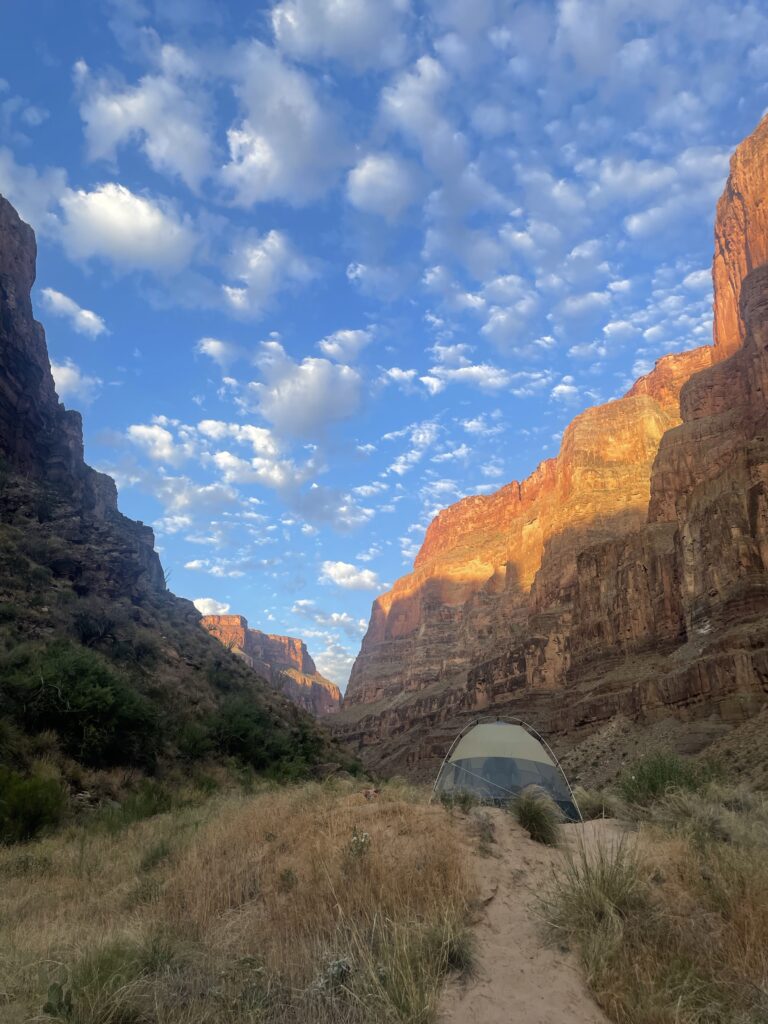
Another crowded campsite
When the release date rolled around in 2022 I reserved 16 spots with Grand Canyon White Water (GCWW). They gave me 48 hours to herd the cats and get everyone to sign up and pay the $400 deposit. The company is one of the largest outfitters running the Canyon and based in Flagstaff, an easy two-hour drive from our house. I could not have been happier with my choice. They proved to be excellent, and I highly recommend them.
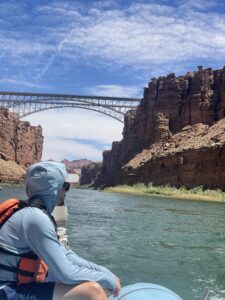
The voyage begins
GCWW provides several trip options both motorized and oared trips of various lengths. The Canyon is long, remote and has very few access points. I wanted to raft the full Canyon which is 226 miles, in a motorized raft it takes 8 days or 15 in a smaller oared raft. Knowing my kids would not be able to get 15 days off work, I chose the 8-day trip. Also, 15 days of tent camping might stretch my camping quota. In fact, 8 days of tent camping would be more than I have done in the past 20 years combined. I have never been much of a tent camper and at my advanced age the idea of sleeping on the ground and trying to crawl out of a tent in the morning has very little appeal. But who said living your dream would be easy….or comfortable. The cost for an 8 day fully provisioned trip down the Grand Canyon is about equal to a one-week cruise, $3500 per person plus tip. I told you this was not a cheap dream!
After clearing the registration hurdle we just had to sit and wait 16 months until our start date of May 29, 2023 rolled around. During the wait a few names on our list changed, most regrettable was Cap who had to drop out as she just couldn’t get the time off from work. The silver lining is I can make the trip again when Cap can find the time.
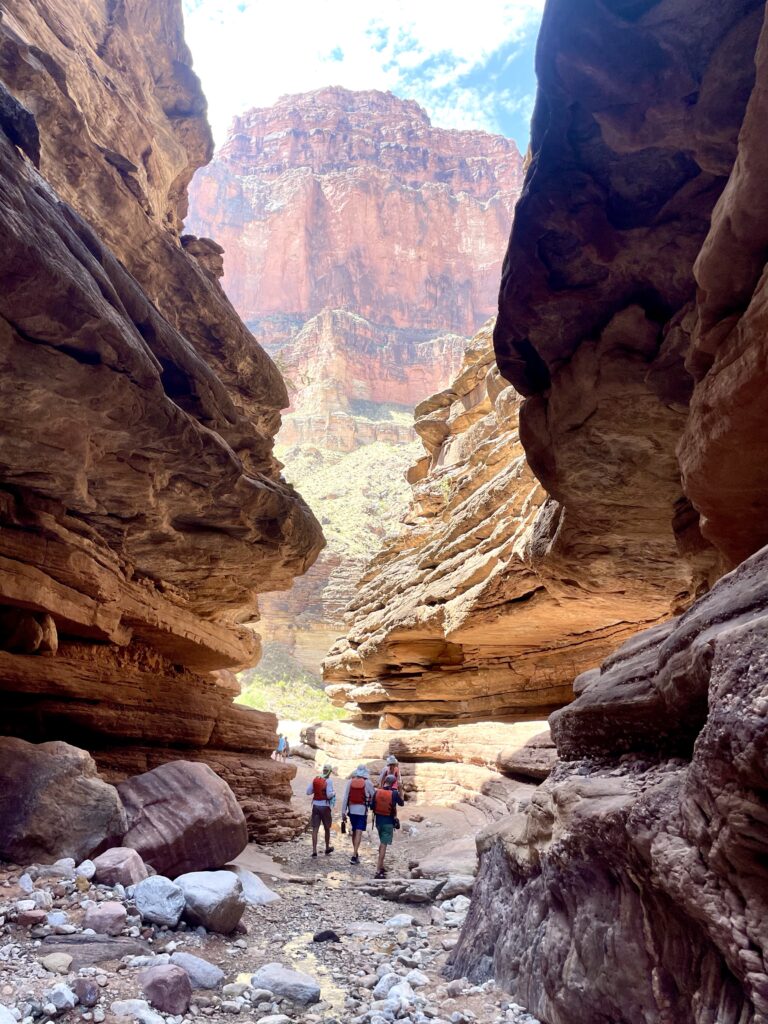
A short hike off the river
May 2023 finally arrived, friends Terri and Dave flew into Phoenix, we made a provisioning stop at Total Wine (alcohol is the only thing not provided by GCWW and you can bring as much as you want, in contrast to the weight limit on your clothes bag) then Terri, Jake, Dave and I drove up to Flagstaff where we met up with our other rafting companions. 15 in our group were joined by 11 others totaling 26 travelers and 4 guides to fill out our two 35-foot motorized rafts. We boarded a luxury bus in Flagstaff for a two-hour ride to our starting point at Lees Ferry. The launch point is named after John Lee who ran a ferry service back in the 1870s, a Mormon and the only known participant in the mountain meadows massacre Lee attempted to evade capture by moving to the Canyon. It worked for awhile until he was ultimately found, tried and executed. Regardless of his demise the landing still carries his name. 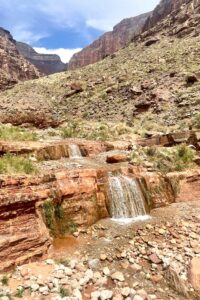
The canyon outfitters strongly adhere to the leave no trace philosophy. Everything taken in is taken out. To be blunt, urine can go into the river, but not on the ground. A new clean portable toilet is provided at each campsite with a lovely view of the river. When leaving camp the toilet is sealed up and carried out. The result is that every camp site is clean and pristine even with limited campsites and multiple rafters using them daily. No trash, no weird smells, just white sand, bushes and a swift flowing river.
We were met at the rafts by our guides. The initial briefing covering safety and trip expectations was given by our fearless leader Cora. With over 50 trips down the Canyon she is an expert at age 26. This was her first time as trip leader, the guide who makes all the decisions on the trip. To celebrate her inaugural lead down the river the second boatman was Bill her proud father who in good father fashion, sat back, ran his raft and followed Cora’s lead without comment. Bill himself has been guiding the river for 30 years. Rounding out our crew was Walt, another 30 year veteran of the river and Beth a retired ER nurse who occasionally volunteers for GCWW. At first glance you might not be impressed with this rag tag group of self-proclaimed river rats. No business suits or faux navel uniforms like on a luxury cruise ship. But looks are deceiving, their calm demeanor and laid-back appearance hides years of experience, and the calm approach continues when the shit hits the fan.
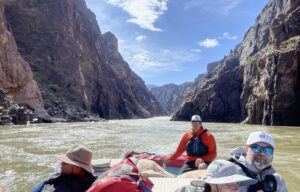
Second in command, Bill
When an oil plug blows and Cora loses her engine she gives a quick signal and Bill maneuvers his raft nudging her to shore and the crew does an engine swap in 20 minutes, not quite Formula One speed but impressive none the less. When a drag bag is accidentally dropped and wraps itself around Bill’s prop seconds before a class 10 rapid, no worry, he deftly unwraps it, restarts the engine and runs the rapids, then politely reminds us to make sure the bag is clipped to the boat before throwing it in the water. Drag bags operate as beverage coolers, the bags hold beer and pop which are kept cool by the 55-degree river water.
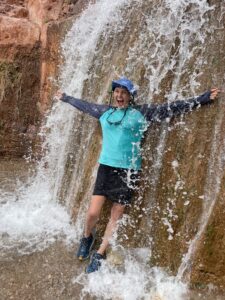
Terri cooling off
Before boarding we are assigned our life vest, one small and one large dry bag. The small bag is for daytime use, sunscreen, jackets, water bottles with easy access throughout the day. In the large drybag is our sleeping bag, pillow and blanket all provided by GCWW along with the bag of clothes we brought from home. The large bags are loaded, covered, and strapped on so they are not accessible until we make camp.
Fully loaded and briefed, Cora reads us a poem about the Canyon and then we are off. Moving down river passing under the Lees Ferry Bridge with its nesting California Condors, the first rapids are just around the bend and those of us on the front are soaked with the chilly 55-degree water. It is invigorating to say the least. Swim shorts, a long sleeved sun shirt and Teva sandals are my attire most days, a wet shirt and a breeze off the river can leave you shivering in the 95 degree heat. The back of the raft gets less water and the very back “princess seat” remains dry except in the largest rapids. We quickly learn to adjust our position on the raft and/or add a layer of rain gear depending upon how wet or chilled we want to be. While clothes dry quickly, by the end of the day you are tired of sitting in a wet swimsuit and looking forward to dry clothes for dinner.
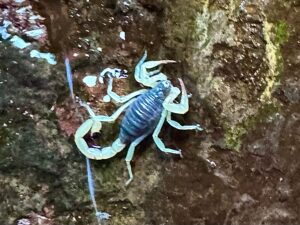
A local resident
Day one we cover 23 miles making camp around 3:00. The rafts are tied off and we each carry our day bags ashore to find a camp site marking it with our bag. We then return to the raft and begin the offloading, we form a bucket line and bags are passed off to shore, followed by tents, cots, camping chairs, and the kitchen. Jake, being one of the youngest on the trip and certainly the most enthusiastic is consistently at the head of the bucket line working the tricky transition of moving bags off the raft and onto land. Within a few days he is helping the guides tie and secure the loads. By day 4 the guides are asking Jake if he would like a job with GCWW.
After offloading, the guides set up the bathroom and the kitchen while we set up our camp sites. About half the people use tents but Jake and I chose to use only cots and sleep under the stars. An excellent choice, easy set up, the cots are surprisingly comfortable and sleeping under the stars is spectacular. A huge bonus, there are no bugs to speak of, our bug spray remained unused the entire trip. Overall the best camping experience ever. The weather is near perfect with sunny days in the mid-nineties dropping into the mid sixties overnight. We did experience a couple of short-lived rain showers but nothing serious. We quickly learned to embrace the sand, the fine white sand gets everywhere and you learn to live a slightly gritty but clean coexistence. 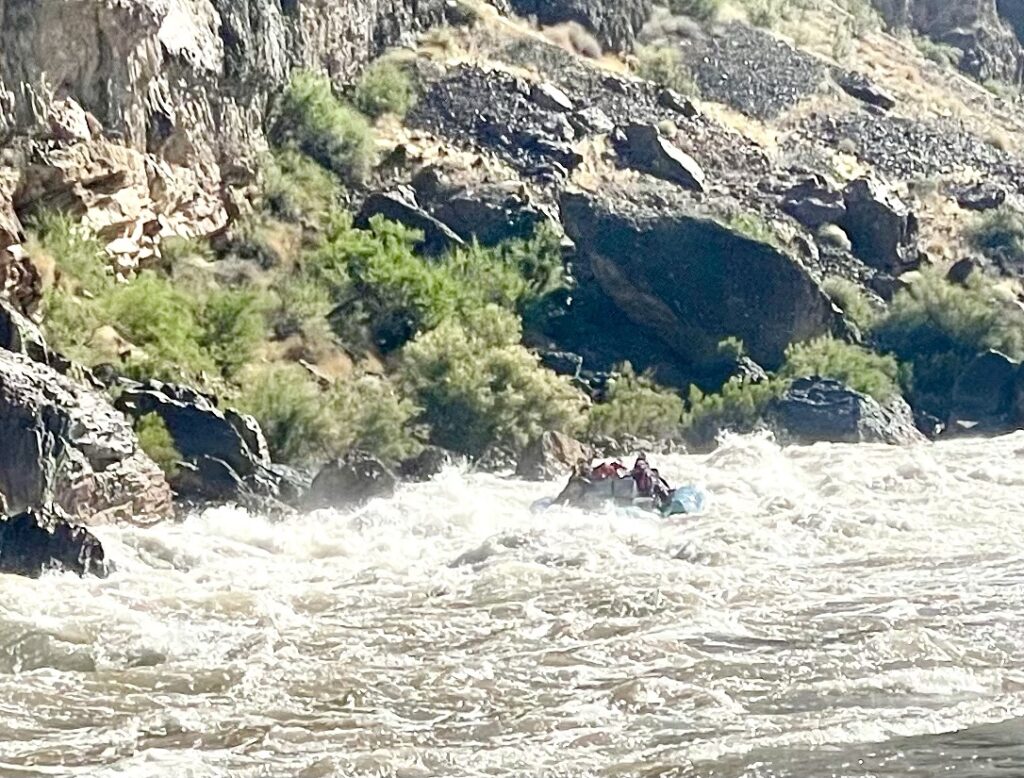
Our guides produce high camping cuisine cooking with propane and charcoal using a cast iron flat top and cast-iron Dutch ovens. As Bill layers three huge Dutch ovens with hot charcoal he explains the method delivers a constant 350 degree heat allowing them to bake scratch made lasagna, or a cake for dessert.
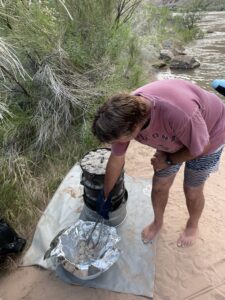
Baking Lasagna
Our first night is salmon with vegetables and salad. Other nights include pork chops, fajitas, and rib eye steak. Breakfasts include eggs made to order, bacon, sausage, pancakes and French toast. For lunch we pull over to the shore, set up a small kitchen and make sandwiches or wraps with deli meats. On the raft hunger is kept at bay with a constant array of snacks from the snack box. We are never hungry and begin to worry about stepping on the scale when we get home.
The days go by quickly and we settle into an easy routine. Like an Imam’s call to prayer, Walt wails a call to coffee around 5:30 AM. After our morning cup we begin breaking camp while the guides prepare breakfast. By 7:30 or 8 we have eaten, loaded the rafts and are on the river.
Splashing through rapids, admiring the beauty of the Canyon as we move down the river at 8 miles an hour powered by the flow and our trusty Honda 30 outboard. We may stop for a short hike along the way exploring beautiful side canyons or 1000-year-old relics from the indigenous people who built seasonal homes and grew crops along the river centuries ago. After making camp in the afternoon we may bathe in the chilly river water but always gather for happy hour while the guides prepare dinner. Jake makes the genius observation that our camp chairs would work nicely on a sandbar and the Wet Foot bar is born.
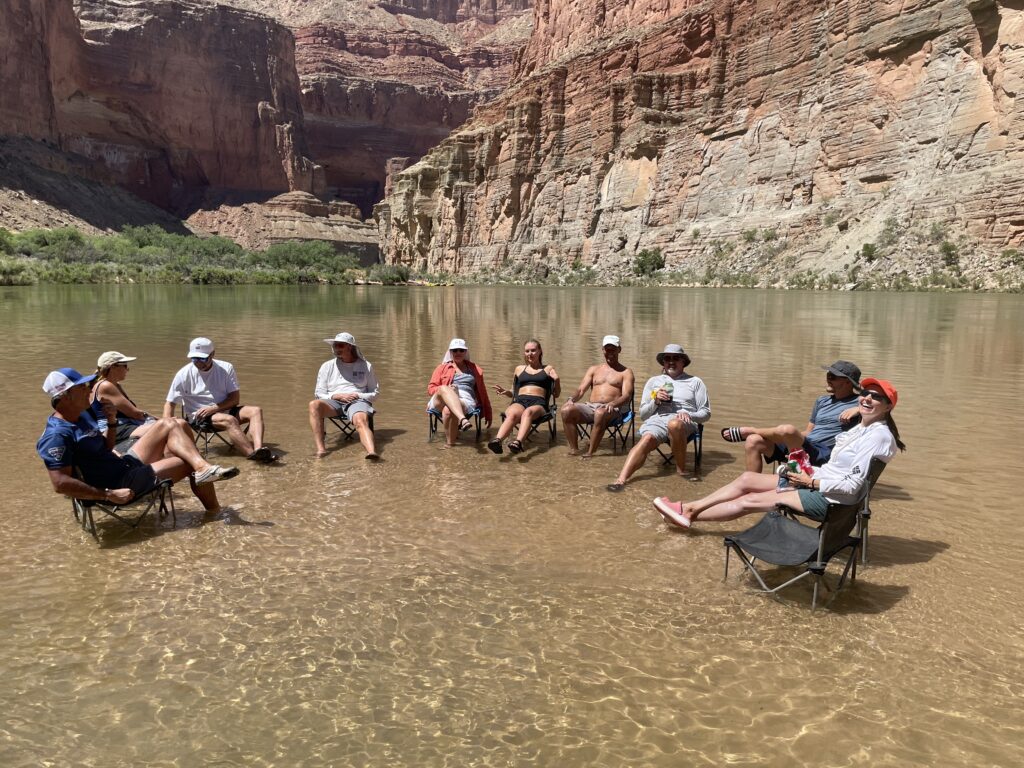
The Wet Foot bar
His idea gathers fans and whenever our camp has a shallow sandy spot happy hour is actually in the river rather than next to it. After sharing a little fine Tequila with Beth, she and Cora begin joining me each evening for a daily ration like sailors of old. Jake takes on the role of camp DJ and amazingly keeps his phone and speaker charged for all 8 days taking music requests from everyone.
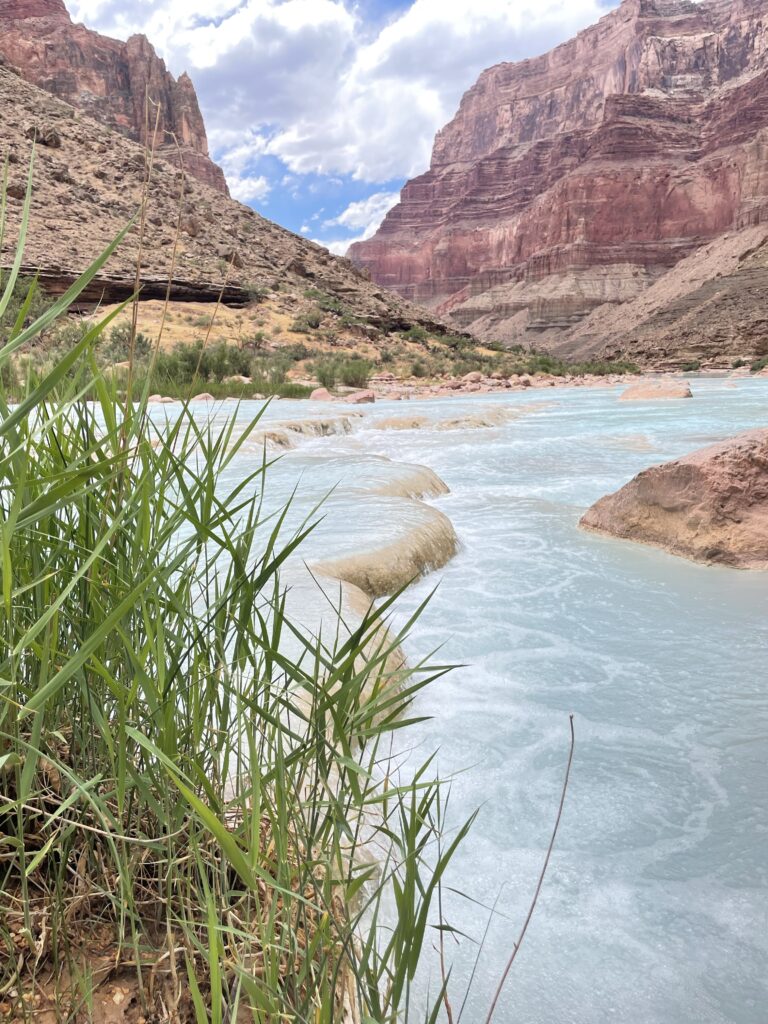
Its running blue!
On day three Cora pulls over near the confluence of the Little Colorado, she jumps ashore for an exploration and comes back dancing and yelling “its blue, its blue”. Initial concern for our leader’s sanity fades as she explains that the Little Colorado River runs muddy during the spring run off but around the first of June it turns a beautiful light blue colored by the travertine rock along the canyon. Our trip is the first of the year to find it running blue. This means we can float the small rapids using our life jackets as floats wearing them diaper style, very fashionable…..not. But great fun and an amazing experience.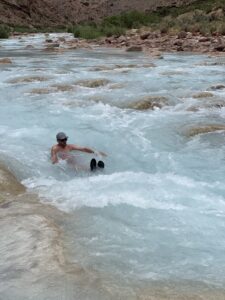
We continue down the Canyon making camp at sites with names like Lower Saddle, Upper Tanner and Talking heads after running rapids named Hermit, Crystal, and Lava. Throughout the trip Cora or Walt gives us a history lesson on the rock layers, or the people who have come to the Canyon. On hikes it is not uncommon for Cora to pull out a tattered book and read us a story of the Canyon. Walt regales us with stories of trips past, like when a waterspout lifted their rafts into the air dumping and scattering their contents. Or the time in 1983 made famous by the book “The Emerald Mile” when the Bureau released record runoff over the Glen Canyon Dam to prevent a dam failure and in doing so flooded the Canyon with more than three times the normal flow. The only warning they gave rafters were notes dropped from a plane telling them to be safe and camp high!

Storytime with Cora
Each day we spend about 5 hours on the River interspersed with stops for hiking and lunch. On the morning of day 8 we arrive at Diamond Creek where we leave the river and our guides who must continue another day down to Lake Mead where they can pull the rafts and haul them to Flagstaff. Diamond creek is on the Hualapai reservation and we must take a school bus (no air-conditioning) off the reservation on a barely graded road, a bumpy hour later we meet up with our lovely air-conditioned bus which takes us back to Flagstaff. Later, discussing the highs and lows of the trip, all agree the low point was the school bus ride.
I look forward to doing it all again with my daughter and who knows, maybe Jake will be our guide.
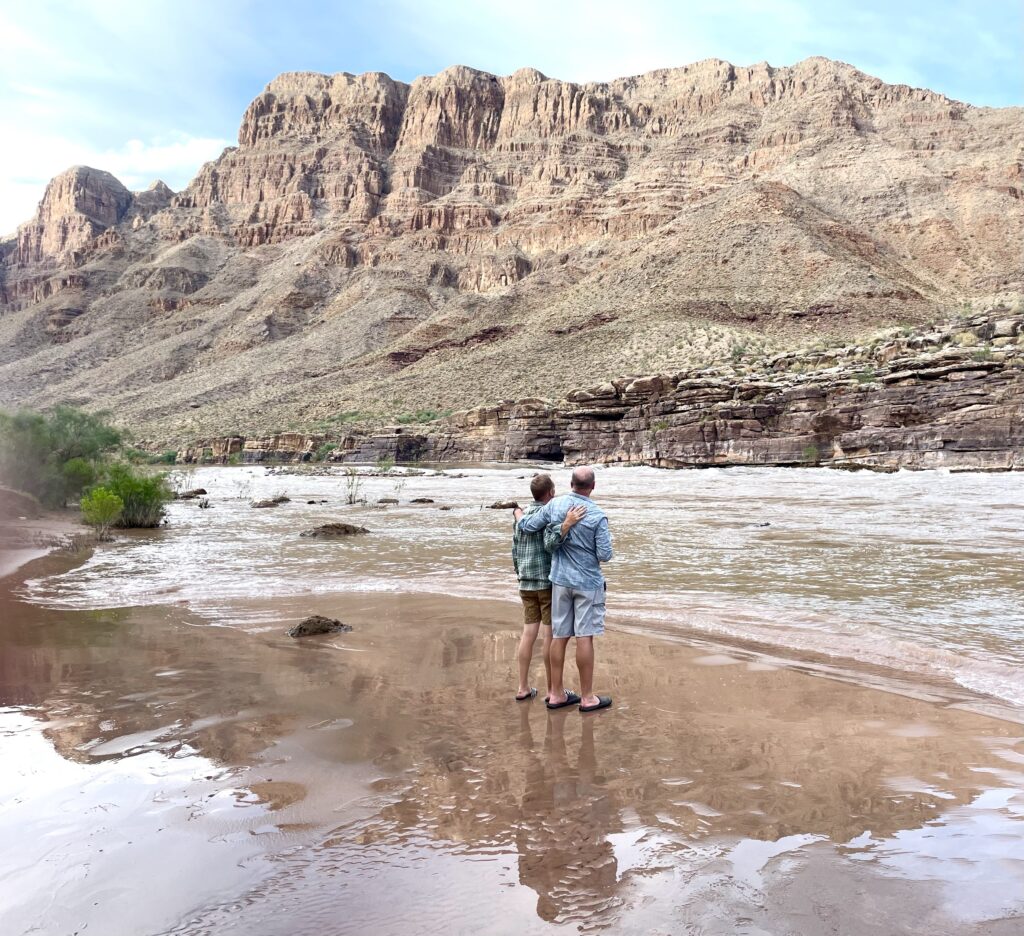
Last night

